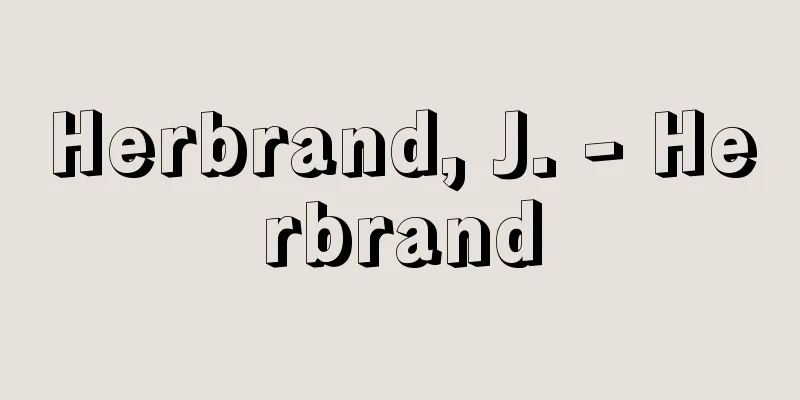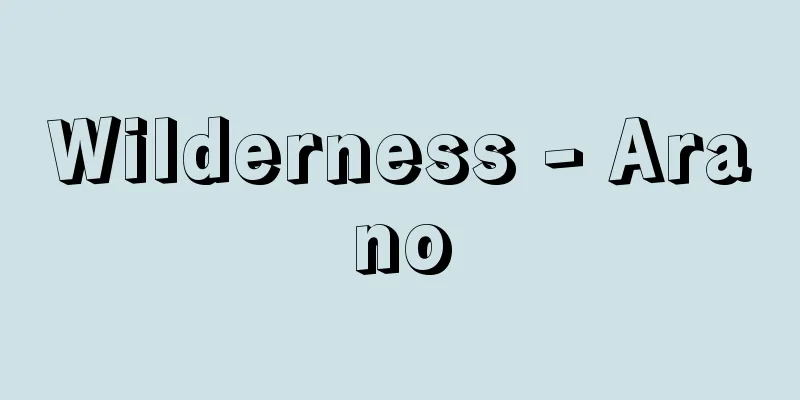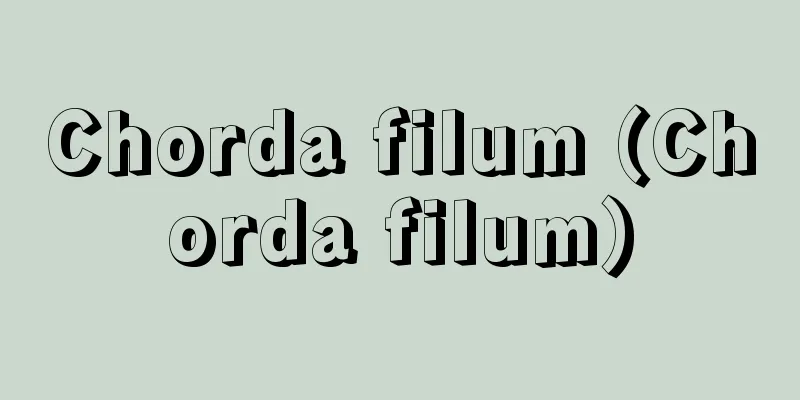Gravel - Jari (English spelling)

|
Coarse rounded particles formed when rocks break down due to weathering and are abraded by running water and other abrasives. When used in concrete, it is called coarse aggregate. It usually refers to particles with a diameter of 5 to 40 mm. Those with a diameter of 12 to 13 cm or more are called boulders. Rocks or boulders crushed into the same particle size as gravel using a crusher are called crushed stone (gravel). Gravel is classified into river gravel, mountain gravel, sea gravel, etc. depending on the place of origin. It is also classified into ordinary gravel, volcanic gravel (lightweight gravel), artificial lightweight coarse aggregate, crushed stone, blast furnace slag coarse aggregate (gravel made by slowly cooling slag generated from blast furnaces during steelmaking, crushing it with a crusher, and arranging the size of the gravel) depending on the purpose. It is classified into coarse aggregate for concrete, for roadbeds, cut gravel, etc. Most of the properties of gravel are determined by the type and properties of the rock-forming minerals that make up the grains, so it can be said that its properties are determined by its place of origin and the river. Hard gravel is produced from rivers in igneous rock areas, while relatively soft gravel made of sedimentary rock is collected from the Boso Peninsula and other areas. Ordinary gravel has a specific gravity of 2.5 to 2.7 and a water absorption rate of 0.6 to 5.0%. The softer the gravel, the lower its specific gravity and the higher its water absorption rate. River gravel is spherical and clean because it has been washed by water. Gravel from old riverbeds and mountain gravel contains organic matter and clay, so it needs to be washed. Disposing of this muddy washing water often causes environmental pollution and is problematic. If good quality parent rock is selected for crushed stone (gravel), it is strong and durable. Some crushed stone has an alkali-aggregate reaction (a phenomenon in which it reacts with sodium oxide or potassium oxide in cement, expanding and causing cracks in the concrete), and in 2000, alkali-aggregate reaction was found to be occurring on road bridges on expressways and other roads, causing major problems. The stone is crushed in a crusher and sifted to size, so the particle size distribution is good but the shapes are angular. However, the use of crushed stone for concrete is gradually increasing due to the depletion of natural gravel. Sea gravel has a good particle shape due to the action of waves. If marine aggregate is not thoroughly washed to remove chlorides, it will cause reinforcing bars to rust. The mining regulations for river gravel and sea gravel are strict, and production has decreased. It is difficult to obtain mining rights for gravel from old riverbeds and mountain gravel, and future production is not expected to be very high due to issues such as the disposal of washing mud. As a result, there is a tendency to rely on crushed stone and blast furnace slag crushed stone, with crushed stone accounting for approximately 40% of the 170 million tons of aggregate consumed in 2004. [Yoshio Kasai] [Reference item] |Source: Shogakukan Encyclopedia Nipponica About Encyclopedia Nipponica Information | Legend |
|
岩石が風化作用により崩壊し、流水その他の摩耗作用によってできた丸みをもつ粗粒。コンクリートに用いる場合、粗骨材という。通常粒径5ミリメートル以上、40ミリメートル以下程度の粒をいう。粒径12~13センチメートル程度より大きいものを玉石という。岩石や玉石をクラッシャーにより砂利と同程度の粒径に砕いたものを砕石(砂利)という。 砂利は産地によって川砂利、山砂利、海砂利などと区分される。また組成や成因などによって普通砂利、火山砂利(軽量砂利)、人工軽量粗骨材、砕石、高炉スラグ粗骨材(製鉄の際に高炉から発生するスラグを徐冷してクラッシャーで破砕し整粒した砂利)などがある。用途によりコンクリート用粗骨材、路盤用、切込(きりこみ)砂利などに区分される。 砂利の性質のほとんどは粒を構成する造岩鉱物の種類、性質によって決まるので、産地や河川によって性質が決まるといってもよい。火成岩地帯の河川からは硬質の砂利が産出し、房総半島などでは堆積(たいせき)岩質の比較的軟質の砂利が採取される。普通の砂利は比重2.5~2.7、吸水率0.6~5.0%である。比重は軟質な砂利ほど小さく、吸水率は大きい。川砂利は粒形が球状で、水に洗われているので清浄である。旧河川敷の砂利や山砂利は有機質や粘土などを含むので洗浄する必要がある。この洗浄泥水の処理はしばしば環境汚染を引き起こし問題となる。砕石(砂利)は良質の母岩を選定すれば、強度、耐久性の点では安心である。一部の砕石についてアルカリ骨材反応(セメント中の酸化ナトリウムや酸化カリウムと反応して膨張し、コンクリートにひび割れを生ずる現象)が発生し、2000年(平成12)には、高速道路などの道路橋でアルカリ骨材反応が起きているのがみつかり、大きな問題となった。クラッシャーで破砕し、ふるいでふるって整粒するので粒度分布はよい反面、形状が角張っているが、天然砂利の枯渇からコンクリート用砕石が漸増している。海砂利は波浪作用により粒形がよい。海産骨材は塩化物の洗浄を十分に行わないと鉄筋が錆(さ)びる。 河川産砂利や海砂利は採取規制が厳しく生産量は少なくなった。旧河川敷の砂利や山砂利は採掘権の取得がむずかしく、洗浄泥水の処分などの点で将来の生産量はあまり期待できない。そのため、砕石、高炉スラグ砕石などに依存する傾向にあり、2004年の骨材消費量1億7000万トンのうち砕石が約40%を占めている。 [笠井芳夫] [参照項目] |出典 小学館 日本大百科全書(ニッポニカ)日本大百科全書(ニッポニカ)について 情報 | 凡例 |
>>: Jarry - Jarry (English spelling) Alfred Jarry
Recommend
Garlic (Hul) - Garlic (English spelling)
A perennial plant of the lily family (illustration...
Killarney - Killarney (English spelling)
A city in County Kerry in the southwest of the Re...
The Six Chronicles of Life
A literary novel from the Qing Dynasty in China. ...
Constant capital, variable capital
Industrial capital is a moving body of value that ...
Two-sided argument - Ryotoronpo
〘noun〙 (translation of dilemma) In formal logic, a...
Renanthera
...In Japan, it often blooms from winter to early...
Nobutsura Hasebe - Nobutsura Hasebe
Year of death: Kenpo 6.10.27 (1218.11.16) Year of ...
jati (English spelling)
… [Varna and Jati] The word "caste" com...
Chin hair - Gakumo
…They have a pair of eyes on the back of their he...
Min-On
Abbreviation for Min-On Association. A music appre...
O. Henry
1862‐1910 An American short story writer. His real...
Sakhalin
A long, narrow Russian island facing the Sea of ...
Imo-mejitsumi - Imo-mejitsumi
…The masonry of the timber frame has been used si...
Bestialium
…An allegorical collection of tales about animals...
TIROS - Tyros
Weather satellite launched by the United States. T...









